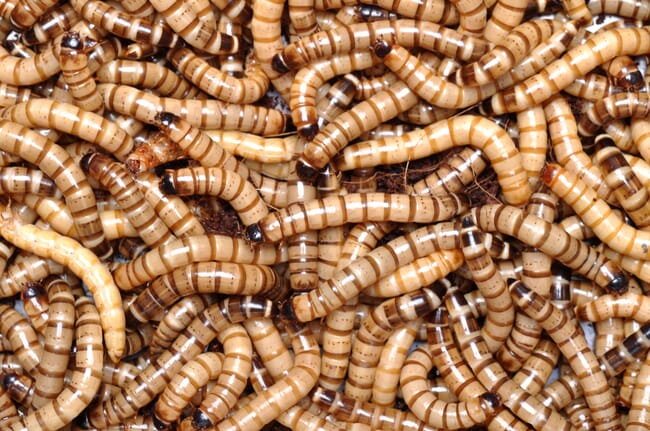In the study, researchers from CIIMAR in Portugal looked at the apparent digestibility coefficients (ADCs) of five commercially available insect larvae meals used in diets for European sea bass (Dicentrarchus labrax) juveniles.

Two of the diets, known as HI and HId, contained black soldier fly (H. illucens) meal; two, known as TM and TMd, contained meal obtained from mealworm (T.molitor); and one contained a locust meal (LM). All five were obtained from different producers.
Each experimental diet was obtained by replacing 20 percent of a commercial-based diet used as reference (DREF), with 1 percent of chromic oxide added, by a test ingredient.
Each diet was fed to quadruplicate groups of fish (initial weight: 33 ± 1 g) and, after an acclimatisation period, daily collection of faeces was performed during 12 days.
Dry matter ADC was highest in TM (85%) and lowest in LM (40%). Protein ADC was high in TMd (93%); intermediate in HId and TM (87 and 89%, respectively); and moderate in LM and HI (74 and 76%, respectively).
The top two diets in terms of the highest digestible total essential amino acids (EAAs) were the two that contained mealworm, followed by the two soldier fly, ones, followed by the one containing locusts. Fat ADC was highest for HId, TMd and TM (93%–95%). Energy and phosphorus ADC were highest in TMd (84% and 91%, respectively) and lowest in LM (53% and 27%, respectively).
The researchers conclude that “the high protein level, high protein digestibility and high amount of digestible EAAs of TM and TMd (> 89%) suggests that Tenebrio molitor larvae meals are the most promising protein sources tested for European sea bass, with potential to replace fishmeal without impairing nutrient digestibility.”
Further information
The results of the study were published under the title “Nutritional value of different insect larvae meals as protein sources for European sea bass (Dicentrarchus labrax) juveniles”, in the recent issue of Aquaculture Research.

